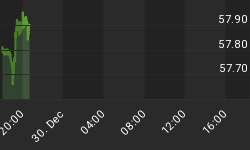Stock markets on Friday plunged from their 19-month peaks on the back of the SEC charging Goldman Sachs with fraud related to subprime-related products. Although the Goldman news served as the trigger, the equity rally has been flashing signs of being overbought, overbullish and overvalued after six consecutive weeks of gains in the case of the MSCI World Index.
In the run-up to Friday, the S&P 500 Index recorded the largest number of consecutive days above its 10-day moving average since the start of records in 1957. As a 10-day period is very short, this means we have been in the sharpest upmove in decades, remarked The Golden Surveyor.
Also, as highlighted by Bespoke, over the past two months 73% of the trading days for the S&P 500 have been up days. "Since 1980, there have only been three other periods where such a high reading was reached - 6/1980, 4/1995 and 11/2006. Be sure to remember this trading period, because this kind of action does not happen often," said the report on Thursday.
Most benchmark indices closed on Friday with so-called key reversals on high volumes, indicating that a pullback or consolidation of the recent gains has probably started. As shown before, April/May also often mark the start of a less positive seasonal pattern.
The first levels of support will be the January highs which are also close to the 50-day moving averages (see table below). In the case of the S&P 500, these levels are 1,150 and 1,141 respectively (see chart below table). The table also provides the February lows for the various indices as these must hold in order for the cyclical bull market to remain intact.


Source: StockCharts.com
Did you enjoy this post? If so, click here to subscribe to updates to Investment Postcards from Cape Town by e-mail.
















